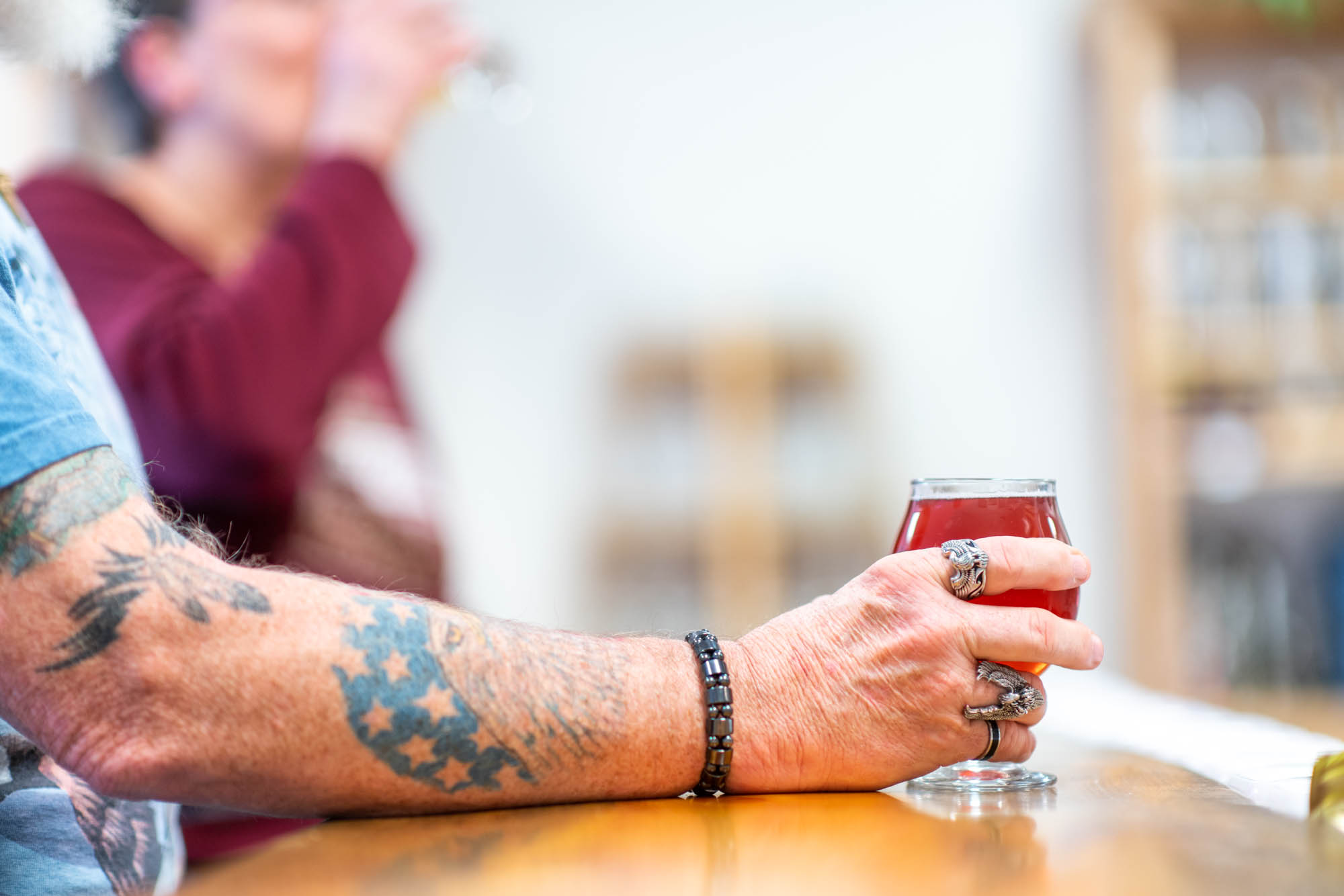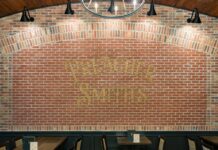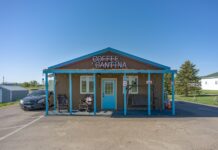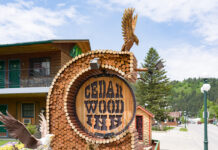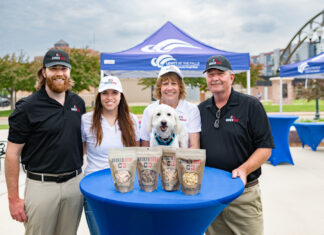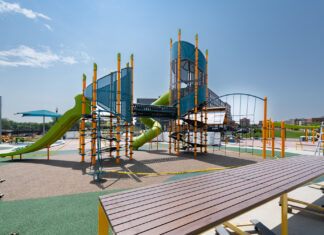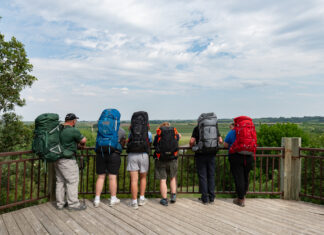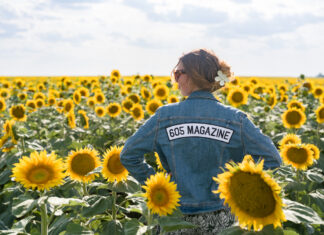It started with a gallon jar. And then five of them. And then 20, after his friends found out. A few months later, Keith Houdashelt was brewing 100 gallons of kombucha at a time; jars of the fizzy, fermented tea elixir crowded the counters of his home.
“I had absolutely no idea. I had no concept of this, even when I was brewing for friends.” – Keith, looking back on what had come from his first gallon on kombucha.
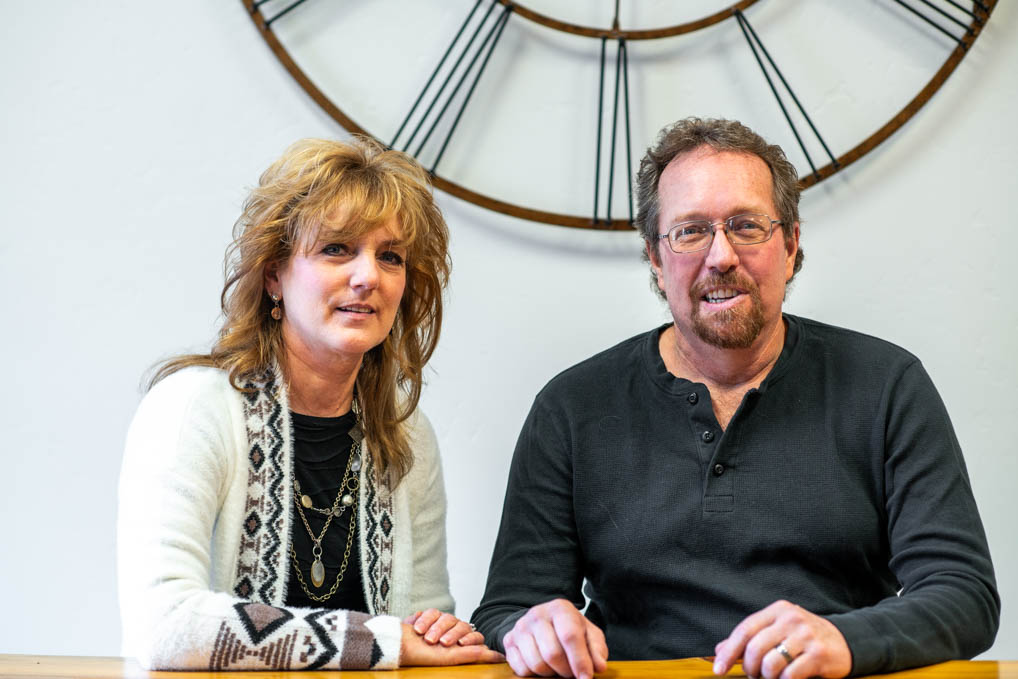
That was five years ago, when Keith spent 100 hours a week building custom homes in Bozeman, Mont., the same thing he’d done every day for the past 30 years. “Work all day. Brew all night.” It was killing him, he said, and soon he had to decide to which passion he’d devote the rest of his life to.
“I said, ‘I’m done with this,’” Keith remembered, seated at a wood table inside Lone Pine Kombucha, a glass of his own tropical blend in front of him. “So I finished my last house and jumped into kombucha full time. It was a leap of faith.”
The leap landed Keith on 7th Street in downtown Rapid City, where he and his then soon-to-be wife, Cindi, operate South Dakota’s lone kombucha taproom. They rotate 60 flavors through 18 taps year-round at their quaint headquarters and distribute to dozens of locations from Spearfish to Sioux Falls.

“We’re a team,” said Cindi. “Everything we do is a team effort.”
When the Houdashelts opened the doors to Lone Pine in the spring of 2018, with it came the introduction of kombucha brewing to South Dakota. Before the Spearfish-based Scobi Kombucha joined the newborn scene later that year, the couple owned the only kombucha license in the state.
Benefits of the Booch
Kombucha’s base is comprised of black tea, yeast, and cane sugar (Keith Houdashelt estimates he uses three milligrams of sugar per eight ounces of kombucha). While the mixture ferments for a week or longer, bacteria and acids -the good kind, known as probiotics-and a small amount of alcohol form inside, making the glass jug a sort of terrarium.
What’s produced is a fizzy drink that is said to improve gut health, among other benefits:
+ BOOSTS ENERGY
+ CLEARS YEAST INFECTIONS
+ RE-BALANACES HORMONES
+ REDUCES BLOOD PRESSURE
+ IMPROVES DIGESTION AND BOWEL FUNCTIONS
+ REBUILDS CONNECTIVE TISSUE
+ RELIEVES HEADACHES AND MIGRAINES

Kombucha isn’t a “cure-all,” Cindi warns, but it works in different ways from person-to-person. For Cindi, it soothed her joints. For Rhonda, a Lone Pine regular, it resolved her digestive issues to the point she no longer needed medication. Even kids can benefit; Keith brews Concord Grape and Cherry Tart flavors as an alternative to soda that the “little people” enjoy.
But be aware: what comes from the bottle is different than what comes fresh from the tap. The Food and Drug Administration requires brewers to filter and pasteurize bottled batches, which kills some of the living bacteria inside.
“No one was doing it here,” said Keith. “It was a perfect market in my mind.”
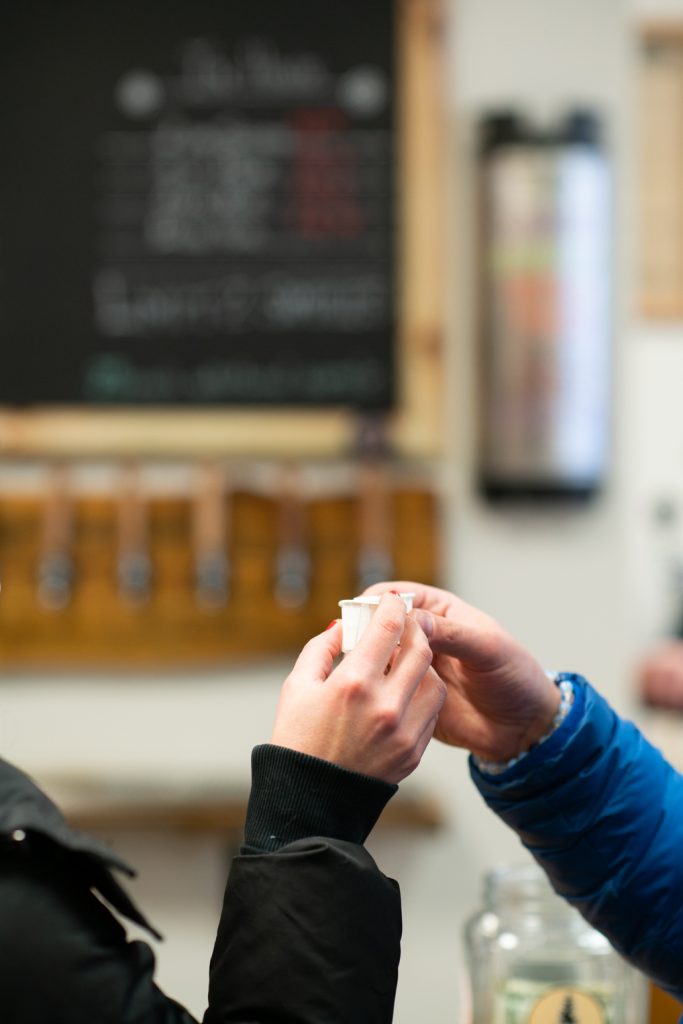
That meant their new challenge resided not in competition, but education. It’s taken some time for the area to acknowledge the legitimacy of kombucha, Cindi said, even though they craft it with produce as local as South Dakota allows. In response, they’ve discovered an effective strategy to enlighten people: shoving it in their faces.
For example: at last year’s Chocopalooza — the Dahl Arts Center’s annual Valentine’s Day chocolate festival — the Houdashelts showed up with tanks of Cherry Chocolate kombucha to serve as a non-alcoholic option, running out long before the microbrewers alongside them. This year, they’ve prepared batches of Chocolate Huckleberry and Cherry Vanilla for the event.
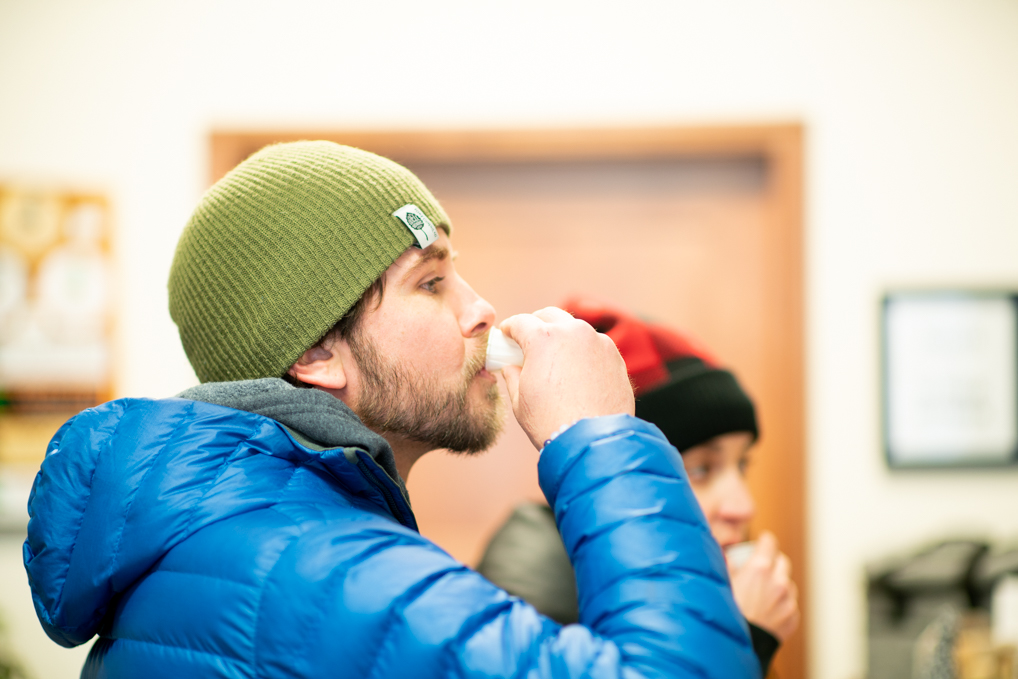
“We just say, ‘here, try it,’” said Keith. “People will say ‘I bought some from a store and didn’t like it.’ Kombucha is like coffee or beer; there’s a difference between what comes from a bottle and what somebody made fresh for you.”
“We’re a South Dakota product. It’s not a product we’d feel comfortable turning over to someone else.” – Cindi
In June, the New York Times described kombucha as a “hippie-cat provision,” and two years earlier said the probiotic-infused concoction “was something your art teacher might have made in her basement.” In the public’s eye, kombucha is a product of millennialism that pairs well with açaí bowls and thrifted “mom jeans.”
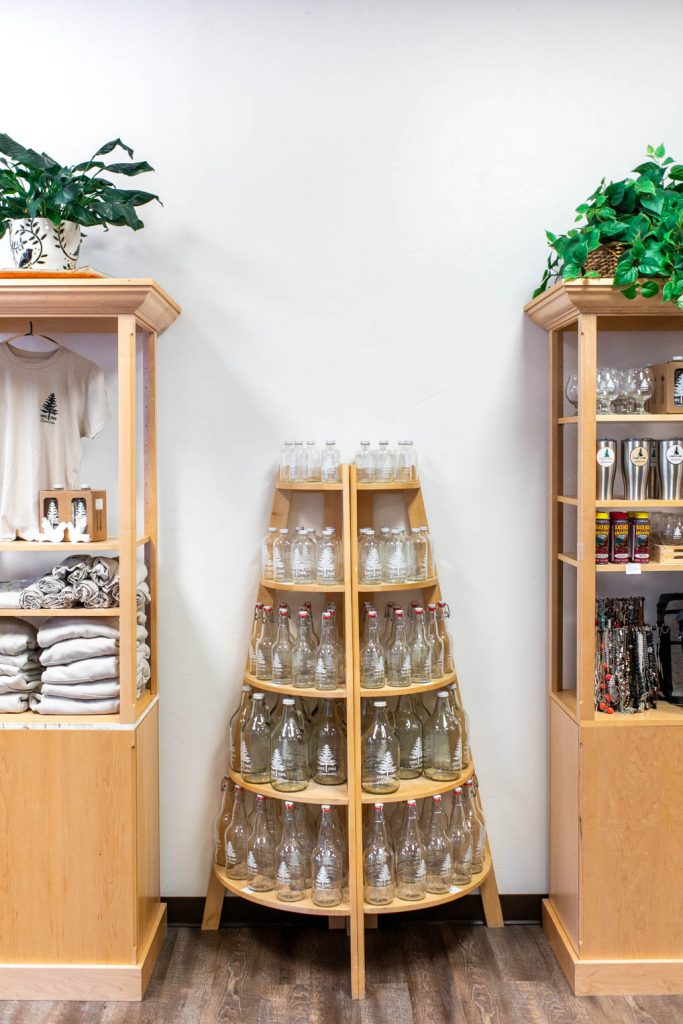
Tell that to the players of the Rapid City Rush, the city’s ECHL hockey team, for whom Lone Pine is now the “official kombucha provider.” The Houldshelts created a four-berry blend, coined The Rush, which they keep in constant supply for the skaters.
“We put a machine and two taps in the locker room for them. They pour their own,” said Keith. “You got guys burning 6,000-7,000 calories a day; their nutrition is their life. Any edge they can gain. They love it.”
The Houdashelts don’t foresee themselves opening another taproom on the other side of the state (Lone Pine is, at heart, an ambitious retirement gig), but endeavors such as this keep them in continual expansion.
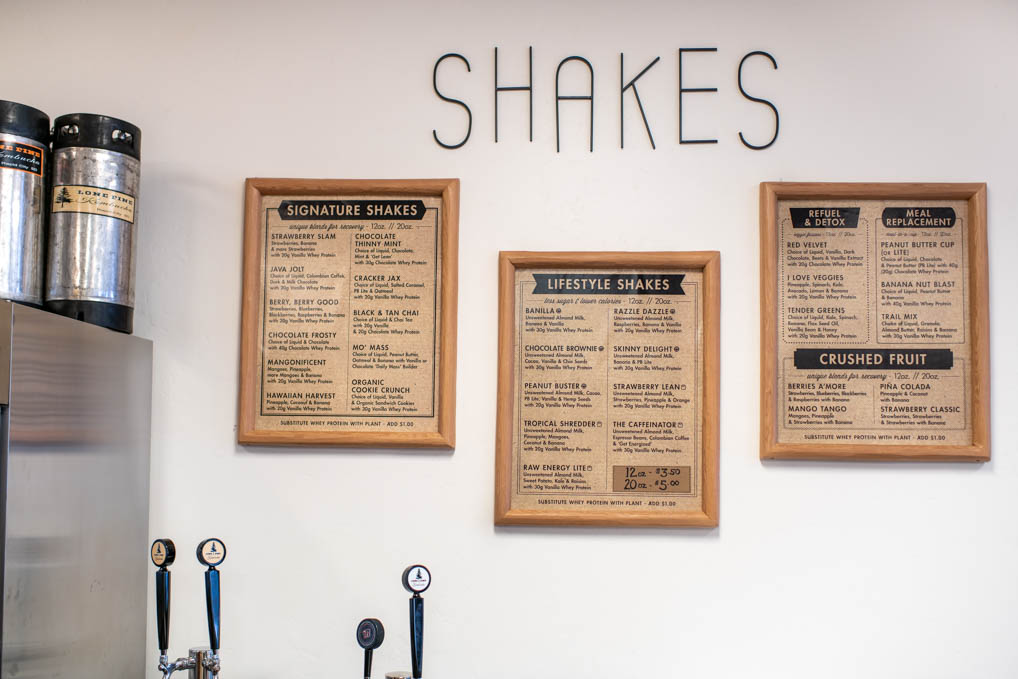
“We’ll never go smaller. We’ll always go bigger,” said Cindi. “But not so big that we can’t sit down with someone for a couple of minutes: ‘How are you doing? How do you feel? How are the grandkids?’ We’ve built up a clientele. We have regulars. We can tell you what day it is and who’s coming in.”
And to the Houdashelts, that’s the magic of kombucha: a living, breathing beverage that connects them with living, breathing people.
“When you put your name on a product, you’re responsible for all of that. It’s something you take great pride in,” said Cindi. “We are Lone Pine Kombucha. This is us.”
For more information, visit facebook.com.


